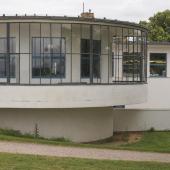Persian Carpets
A Persian carpet is like a relict from another time. Made out of strong fabric, its appearance fascinates people around the world. Not for nothing in the year 2010 the "traditional art of carpet weaving" was included in the "UNESCO Intangible Cultural Heritage Lists."
The Persian rug is considered as a fundamental part of Persian art and culture. The carpets were made in nomadic tribes, villages and courtyard manufactories since the 16th century. They represented the walk of life of their owners and have always reflected the long and rich history of Iran and the peoples living there. Here today, carpets knotted by nomads and inhabitants of rural villages are considered particularly authentic and bound by tradition. These carpets are often manufactured with strong and coarse patterns.
A Persian carpet has certain, repetitive ornaments, motifs and patterns. Here, a large central field is always created, which is surrounded by broad primary and secondary borders. The design of the main bordure is usually floral, whereas small ornaments are repeated in the subordinate side bordure. The most important criterion for an original Persian rug is the balance of knotted pattern. As the carpets represent the most important piece of furniture in a traditional room arrangement, the pattern should be nice to look at from every direction.
What is known for us as a Persian rug is actually called "Ghali". In general in Persian language one calls a floor covering "Farsh", "Gelim" means woven carpet. There are countless different styles of Persian rugs that bring out very diverse pattern configurations. Usually these styles are rooted in the different producing regions and they express regional, traditional cultural influences. It is again the same, that each carpet as an artwork also shows a signature. This is called "Katibeh" and transmits either the name of the carpet designer or the person's name, to who the carpet is given to.




